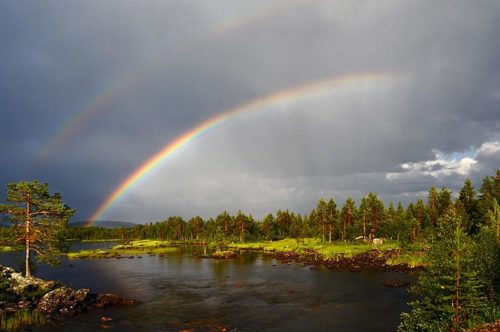When my kids were young we would go on family trips a couple of times per year. Most of the time we would take them to a state park or state forest. Camping and hiking were big parts of our vacations. My wife and I love the outdoors and we spent the first few years of our marriage living in a rural area of Pennsylvania, a state in the eastern United States. We are captivated by the mountains and forests. Especially around the fall season when the leaves began to change. We thought of these areas as truly “God’s Country”.
would take them to a state park or state forest. Camping and hiking were big parts of our vacations. My wife and I love the outdoors and we spent the first few years of our marriage living in a rural area of Pennsylvania, a state in the eastern United States. We are captivated by the mountains and forests. Especially around the fall season when the leaves began to change. We thought of these areas as truly “God’s Country”.
As we traveled about and marveled at the scenery, inevitably we would resurrect a debate we often had about the beauty that surrounded us. What made something pretty or beautiful? When looking at a stream, or crimson leaves or a mountain lake why did these things evoke a sense of wonder. The discussion was whether these feelings were innate in our DNA or were they actually something you learned as you went through life and assimilated as those around you expressed their thoughts of awe and wonder.
Regardless of what side you stood on in our debate, it was clear to all of us that God must have been having a good day when he created the natural beauty that surrounded us. These wonders serve as an indicator, as a sign, of the kingdom of God. It is a reflection of who God is…a way to get an early look into the eyes of the Creator.
This view is very different, however, than those who look at the very same beauty and treat the streams, mountains and lakes as gods. To worship the creation and not the creator. Very much like the idolaters referred to in today’s first reading from Wisdom. Idol worship is not just treating a bronze or golden likeness as a deity. As the writer of Wisdom makes clear, worship of fire, wind, rain and the stars carries the same penchant for paganism as did the Hebrews worshiping the golden calf in the desert at Mount Sinai.
As the Psalmist says today, “The heavens proclaim the glory of God”. The heavens themselves are not the glory. They reflect the glory. No more than admiration of a Monet painting should overshadow the painter himself. The created work is not greater than the creator him/herself.
As my wife and I were making our Camino pilgrimage this past summer we met up with a lot of young people and the conversation often got to belief in God, as we experienced the beauty of Northern Spain. The vast majority felt compelled to communicate that they were not really religious but were more “spiritual” in that they felt close to nature and the natural world around them. They were, in a sense, behaving as the pagans did in Jesus’ time. Allowing the natural world itself to become the center and not the hand that formed it. The danger, of course, is that when the creation becomes the focus God drifts away and Satan takes his place.
St. Ignatius gave us 4 ways to view creation and how to tell if we are having the right attitude towards that which we admire:
1. That created things are there for us to come to a discovery of God and our salvation.
2. That we ought to freely use these things of creation insofar as they lead us to God.
3. That we ought to freely avoid the use of these things insofar as they lead us away from God.
4. And, finally, that there is wisdom in the freedom to know the difference between the use and the avoidance of the world of God’s creation.
And Luke tells us in today’s Gospel to keep our eyes on the prize. On living a life that stays centered on our lives as they will be in heaven and not so focused on this life, this creation, that we lose ultimate union with the Creator himself. He who attempts to preserve their life here on earth will lose their eternal life in heaven. But he who loses his life, who sees this life as just a temporary stop on the road to our eternity, will gain everything in the end.
And as has been the theme over the last week or so, we must always be prepared for we know not when the Son of Man will return. Even Scar from the Lion King knows the value of being ready as he sings to the Hyenas, “Be Prepared”! And that “A shining new era is tip toeing nearer”. When we look face to face with the Artist and no longer have to settle for merely the reflection.
